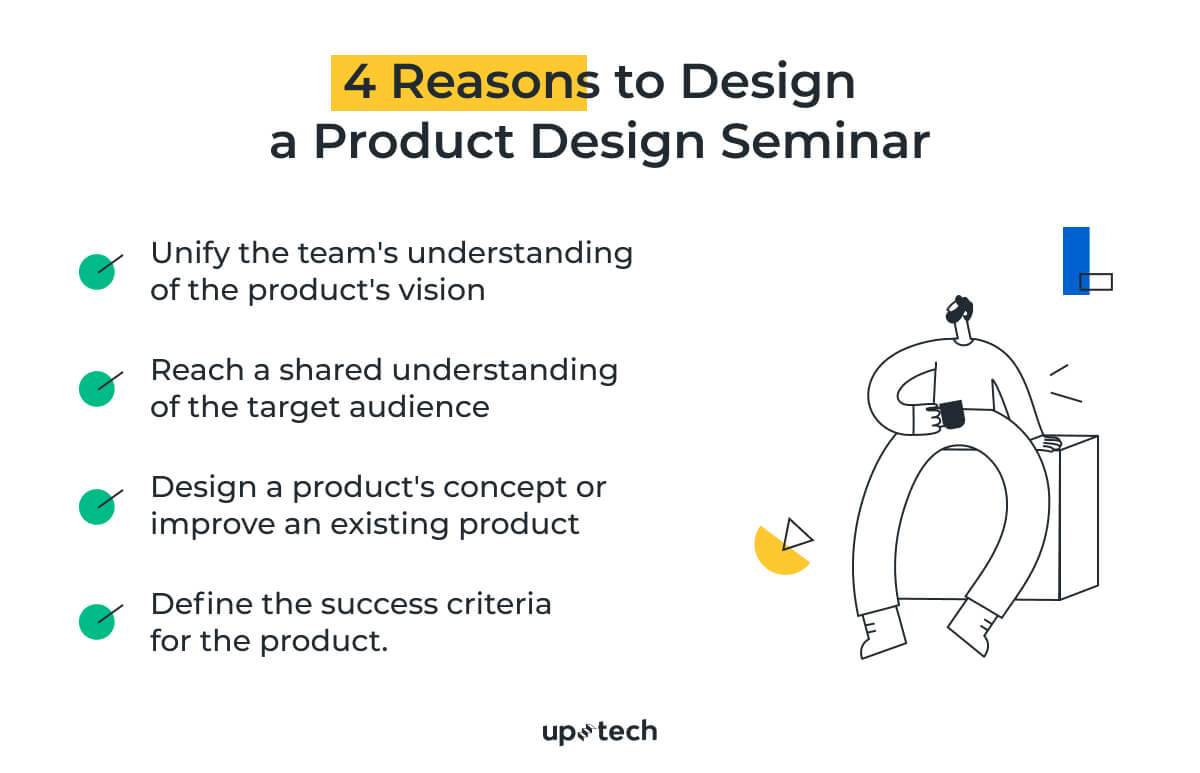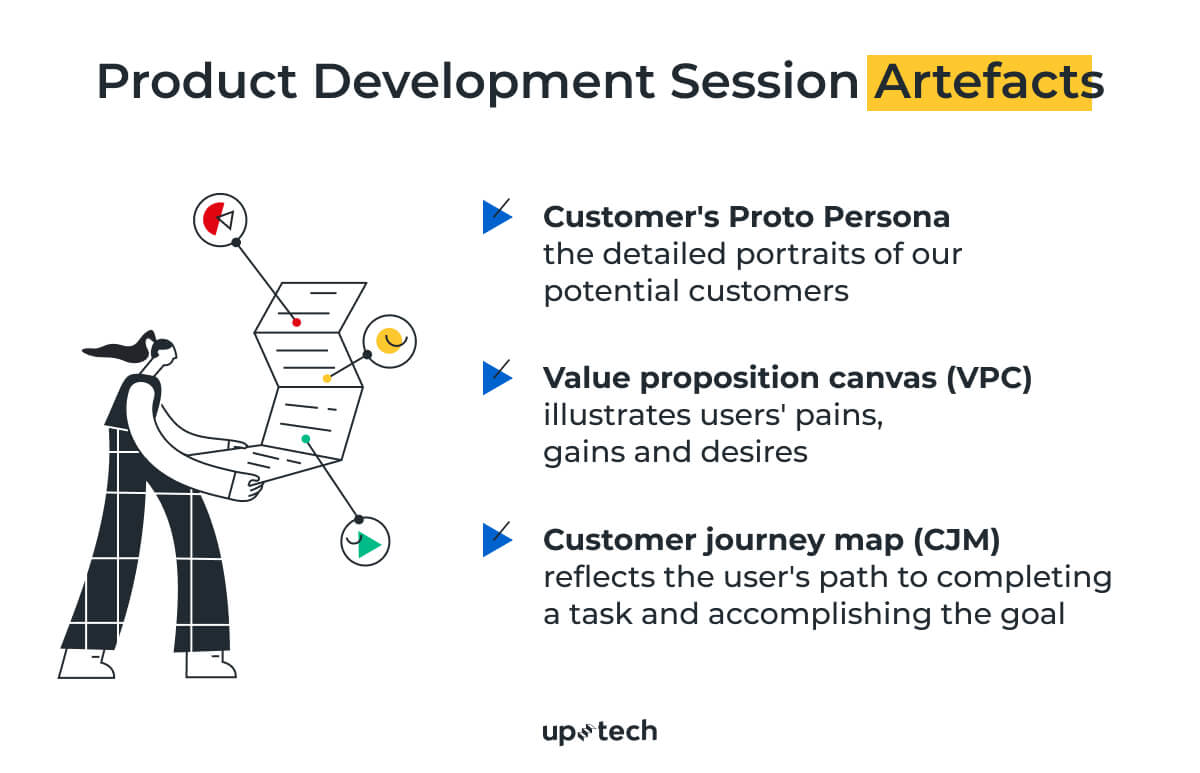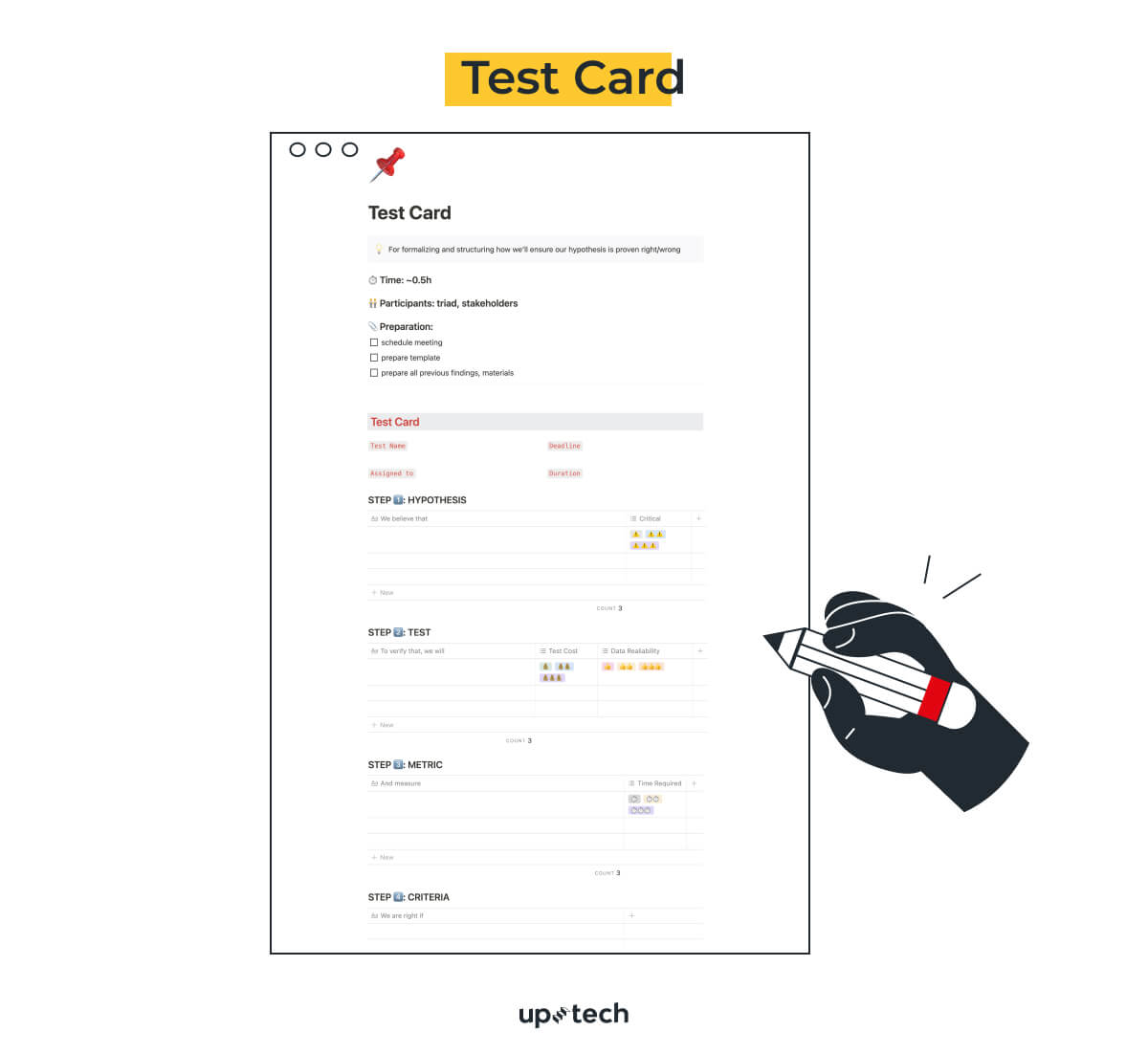The history of digital design embraces two eras: before and after the advent of the product-thinking design. Since the name “product” went beyond the material goods to cover ideas and startups, product design became more human-centered. Its role obtained a brand new role in product development.
As a product development studio, we strongly believe in the power of product design. We have applied many instruments that help us make the design more humane and user-oriented through our practice. Later, all these techniques turned into a product development seminar. So now I want to share some insights on it.
This article will break down the main steps and exercises to complete during a product development seminar. And I will also share some tips on organizing the whole process of a product studio session.
What is a Product Development Seminar?
A product development seminar is a collaborative session where the product development team brainstorms solutions and figures out the improvements for a product.
It usually involves a group of people brainstorming solutions and answers to specific questions about the user. Such sessions leverage the idea of collective thinking to learn the product’s user better, find problems’ solutions and bring value to the product.

Product development seminars are usually aimed at answering the questions like:
- Who will use our product?
- What are the user’s pains and needs?
- How can we solve this problem? And what’s the best way for such a solution?
Product development seminars are usually held when the product development team has already made an initial request to the client and delivered assumptions about what a future product will look like and how it should function. The purpose of the product development seminar at this stage is to validate these assumptions.
Who Participates in Product Development Seminar?
The purpose of any brainstorming workshop is to collect as many different opinions as possible. A product development seminar is not an exception. The workshop gathers professionals working on different parts of the project. It usually consists of the so-called “development triad” or discovery team, that includes:
- Product Manager;
- Designer;
- Tech lead.
Teamwork is one of Uptech’s fundamental values, which we inevitably apply in every project. By teamwork, we mean involving as many parties as possible, so stakeholders are active participants of every product development seminar.

Why Design a Product Development Seminar?
Organization of the product development seminar takes time and effort. So if you are asking yourself why design it, that’s quite a reasonable question.
Well, it may seem like you have talked with stakeholders, and they have already told you every detail of the project. But as practice shows, this information only makes for the top of the iceberg. A big massive piece of information on who the users are and what the product should be like still lies under the surface. A product development seminar aims to fill the gaps in the knowledge about the targeted user and his/her needs.
We have a case in our portfolio when a client came up with one idea in mind. But after a few product iterations and product sessions, we figured out the product had a way different target audience and product’s vision. So from our practice, the primary purposes of the product development seminars are:
- To reach a shared vision of the team on the product’s concept and target audience;
- To generate ideas for the idea of a new product or improve an existing product;
- To align the team on the functionality of the product and reach a common understanding on how to validate it;
- Figure out solid requirements and success criteria for the product.

Check our more about Uptech UI/UX Design Services
Uptech’s 4 Steps of the Product Development Seminar
Finally, we are moving to the steps of the product development seminar. I will try to explain each phase from the perspective of questions to be asked and answered. I will also talk about the exercises that our team completes during each phase and the deliverables produced after at each stage.

Question 1: What are we trying to accomplish?
Before delivering the possible solutions to the problem, it is reasonable to ask: “What is the problem we are trying to solve?” during this product development seminar. Or if put in another form:
- What opportunity can we give to the user by this or that feature?
- What about the metrics?
- How will you know that your solution actually ticks the box?
Answers to these questions will be the pillars that will guide the product development team through the whole discovery process.
Question 2. Who are we building the product for?
This one is about building a proto persona – an artifact, implying the best guess of who can be our potential customer. In other words, this is a strictly detailed portrait of the user from your target audience.
One of the core characteristics of product design is being user-centered. What it means is that we do not simply build an app or software based on our intuition. As a result, real user needs are our main focus on this path.
Before you build anything, it is essential to know who you are making it for. The better you understand the needs of this person and the more detailed image of him/her you can build, the better you can respond to these needs.
Practically, to figure out our users, we make several assumptions to further research and validate them. Usually, we build several proto personas: each one for a specific scenario in the app.
It is worth mentioning that a proto persona is a live instrument that can change and adapt throughout the whole project.
The basic sketch that we fill in looks like this.
.jpeg)
Question 3: What value can we bring to the targeted customer?
Now as we know our customer in the face, we need to identify what jobs he/she should complete to achieve their goals and satisfy their desires, including the obstacles that lie on the way.
We figure this thing out using the VPC (value proposition canvas) – a living artifact that helps you better track how the users make decisions.
In the end, your VPC will include:
- Jobs To Be Done (defines what the customer thinks about). The jobs, in their turn, can be of three types: functional, social, and emotional;
- Users’ Gains & Pains (positive and negative steps that the customer takes/wants to avoid;
- Gain and pain relievers that our product provides to cover users’ problems.
.jpeg)
Question 4: How do users experience the product?
Finally, we are at the phase of asking ourselves, “How does the user experience the product?”. To answer this one, we make up a CJM (customer journey map) – an artifact that reveals the journey a user follows on the way to the final achievement of the goal.
During the VPC stage, we analyzed users’ gains and pains in general. At the CJM stage, we look at how the user faces them moving forward the product flow.
The deliverable of this stage will be a document covering users’:
- Phases
- Actions;
- Thoughts;
- Emotions;
- Opportunities.
With this flow at hand, it will be easier to build the product flow that suits the customer’s needs.
Question 5: How to Ensure Your Idea is Worthy?
Put it to the test! As a result of the previous stages, we have several deliverables that embrace specific hypotheses about the users:
- Customer’s Proto Persona – hypothesis about who our potential customers are;
- Value proposition canvas – hypothesis about what value can we bring to such users;
- Customer journey map – what our app flow might look like.

To organize and structure our ideas, we put these hypotheses into a single table, like this picture.

We will go on with testing our hypotheses via user tests. For that we build so-called Test Cards, that will help us organize the testing process.

Question 6. How to Structure Your Findings?
Up to now, we have many findings on our hands that need to be organized. Lean Canvas is a great instrument that helps us to keep these documents systemized and allows the team to move along the project roadmap.
Lean Canvas is an adapted model of Business Model Canvas, introduced by Ash Maurya in the “Lean Startup.” This artifact helps to organize and structure all the insights and findings. Read this article in our blog to learn more about Lean Canvas.
Tips For Doing a Product Development Seminar
We have figured out some rules of thumb from our practice of carrying out the product development seminar. So here are some tips to take into account while preparing or organizing a product workshop:
Make it a “together alone” thing
While brainstorming is a method of collaborative thinking, participants of the product development seminar work primarily alone. Each of the participants writes down his/her ideas on stickers during a particular time. After that, each person presents their ideas, while others listen to them without evaluation or judgment.
.png)
Keep the timing right
Though the creative process assumes no limits, keeping it organized and in mind, the time limits are still essential. Set up the timer for each exercise you perform to keep track of time. Thus, each exercise should not take more than 30 minutes so that the whole session period does not exceed 4 hours.
Do not get stuck on one idea
Do not try to elaborate on one specific idea. In fact, within this session, the “more the better” rule works. The purpose of this particular session is to generate as many ideas as possible, so do not try to make it more complicated than a straightforward sketch for one picture.
Keep the documents alive
As a result of the product development seminar, you will have a list of artifacts that will help you through the product validation phase. However, these deliverables are not the ultimate point of product development. You should treat them as “live documents” and change them all through the testing process.
Summary
A product development seminar is an effective tool for a product development team to build a user-centered product or improve an existing one. As a part of the hypothesis-validation approach, this workshop helps us to ensure the product will match the real users’ needs.
Contact our design product team to discuss how we can help you with idea validation and product development.



















































































.avif)
















